Spring Risotto with Asparagus & Peas
This post may contain affiliate links. Read my full disclosure policy.
This creamy risotto with asparagus and peas makes a lovely starter, side dish, or vegetarian main course for spring.
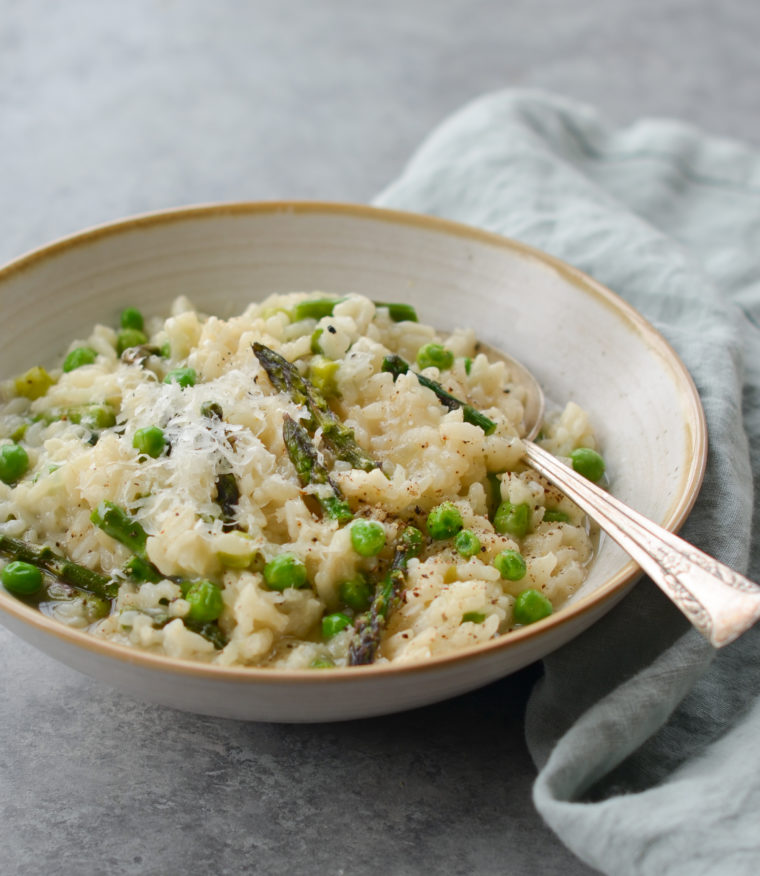
Comforting to eat — and comforting to make, in a mindless, repetitive sort of way — risotto is a northern Italian rice dish cooked gently until it reaches a creamy consistency. Most people think of it as a restaurant-style dish, but it’s actually quite simple to make with just a few ingredients. The only thing to keep in mind is that it requires frequent stirring, so you need to stay close to the stove for 25 minutes while it cooks.
This spring risotto calls for seasonal vegetables but there’s lots of room for creativity and improvisation. Don’t feel like asparagus? Substitute zucchini or mushrooms. Going vegetarian? Replace the chicken broth with vegetable broth. Want to fancy it up? Stir in some fresh herbs at the end. You really can’t go wrong as long as you stick to the basic formula. Serve this spring risotto as a meatless main course or as a side to a simply cooked main dish, like pan-seared salmon or perfectly grilled chicken breasts.
How To Make Spring Risotto with Asparagus & Peas
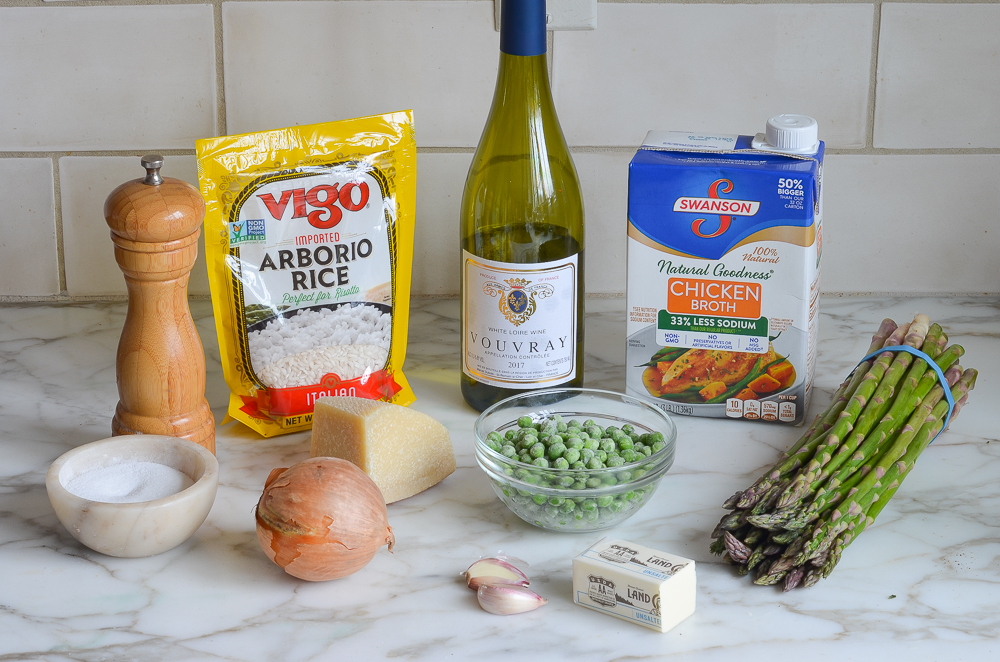
Before we get to the step-by-step instructions, a few words about the ingredients:
- All risotto recipes begin with Arborio rice, a short-grained, high-starch Italian rice that becomes creamy and slightly chewy when cooked. You can find it in the rice section of most supermarkets.
- White wine is a key ingredient in risotto, as it adds nice depth of flavor. However, if you’d prefer not use it, replace it with more broth and add a squeeze of lemon at the end.
- It’s important to use low-sodium broth when making risotto. The broth reduces while it cooks, intensifying the saltiness.
Step-by Step Instructions
The first step to cooking risotto is to bring your broth to a simmer. It’s important that the broth is hot before you add it to the rice, as cold broth will cool the pan down and slow the cooking process.
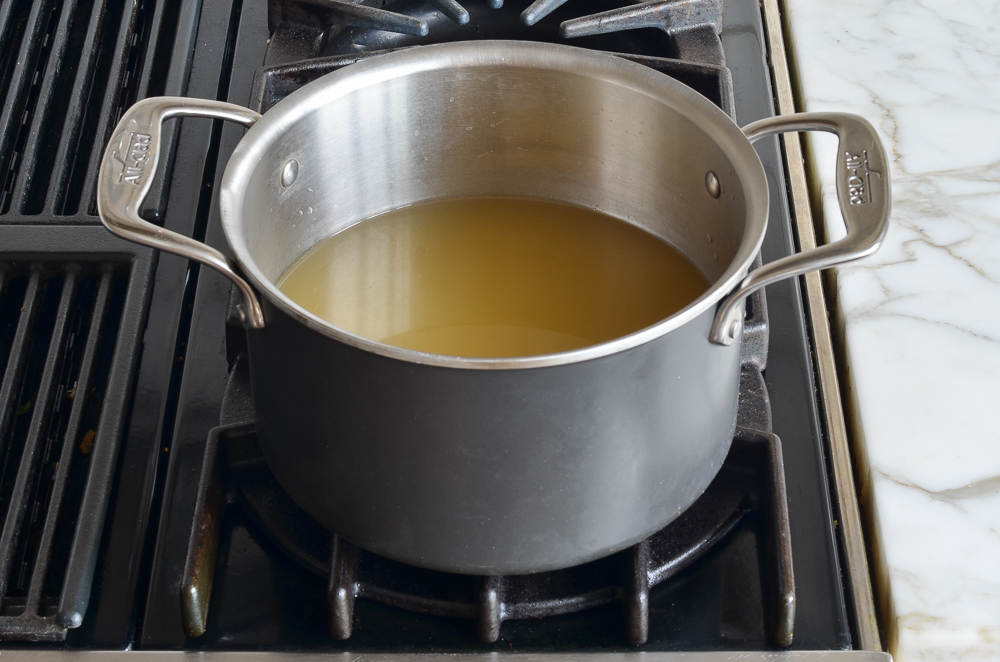
While the broth heats up, melt the butter in a large pot or Dutch oven (it’s important to use a large cooking vessel, as the rice will increase in volume when cooked). Add the asparagus and cook until tender-crisp, a few minutes.
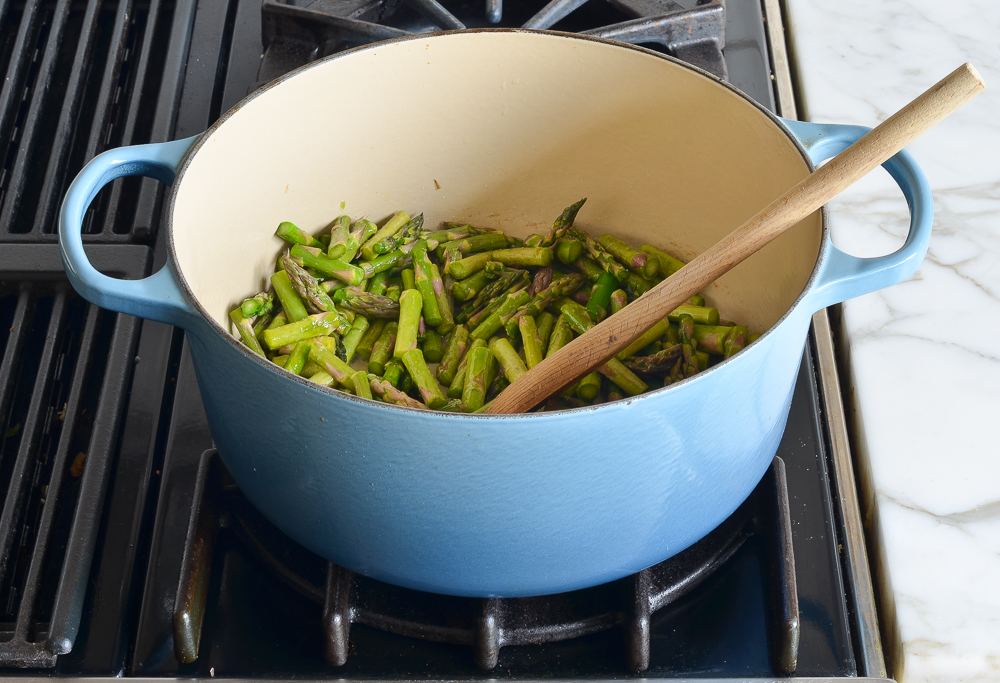
Add the peas and cook for 1 minute more, until they are defrosted.
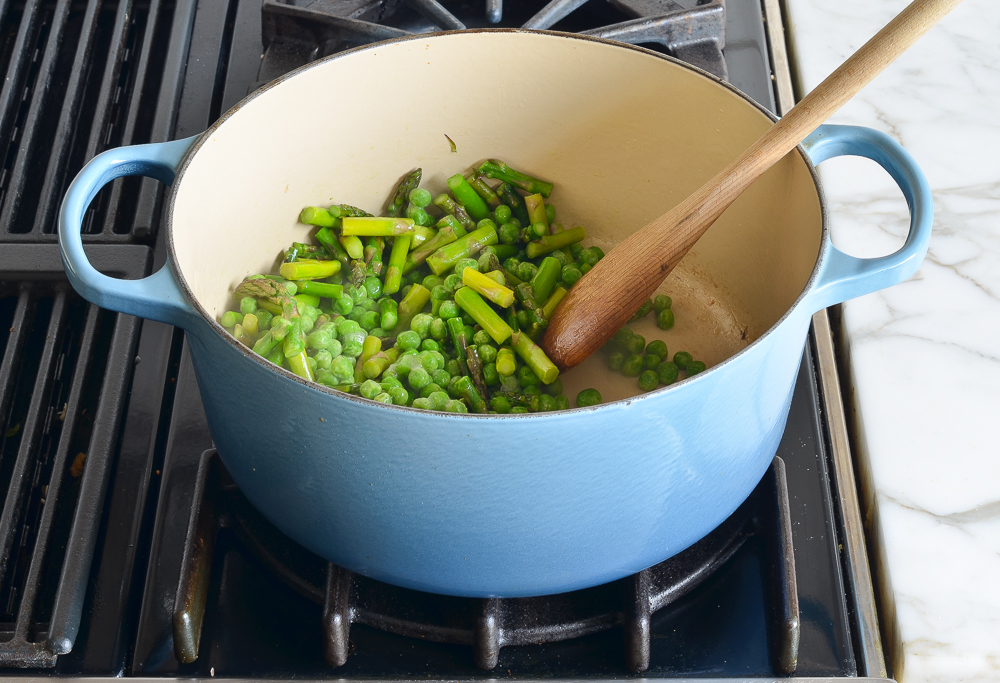
Transfer the vegetables to a plate and set aside. You’ll add them back to the risotto at the very end. Cooking the vegetables first ensures that they don’t overcook.
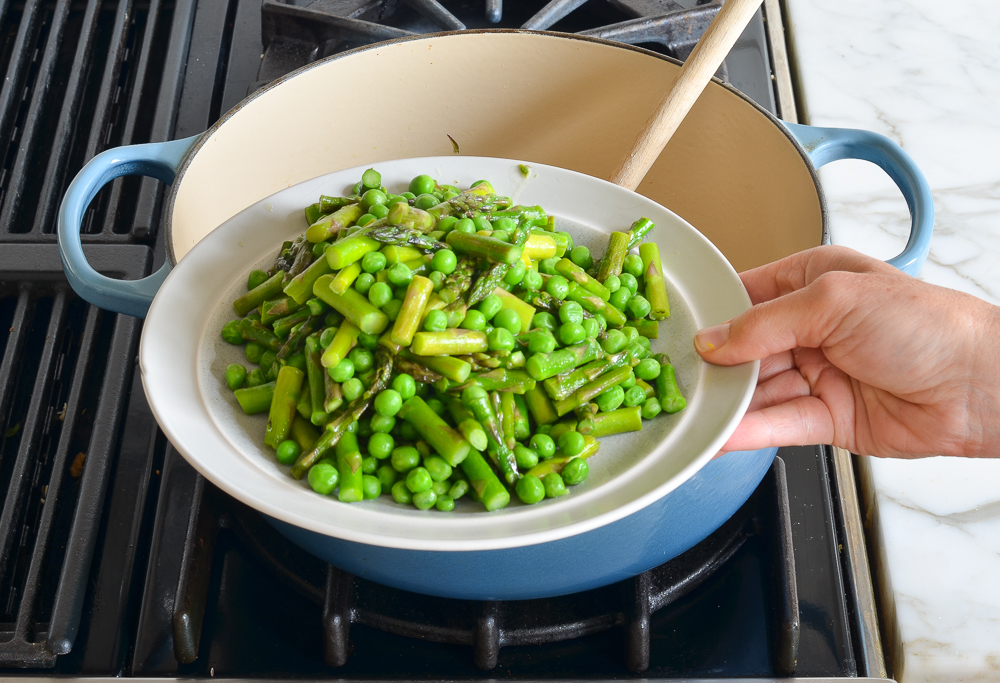
In the same pot over medium-low heat, melt 2 tablespoons of the butter and add the onions.
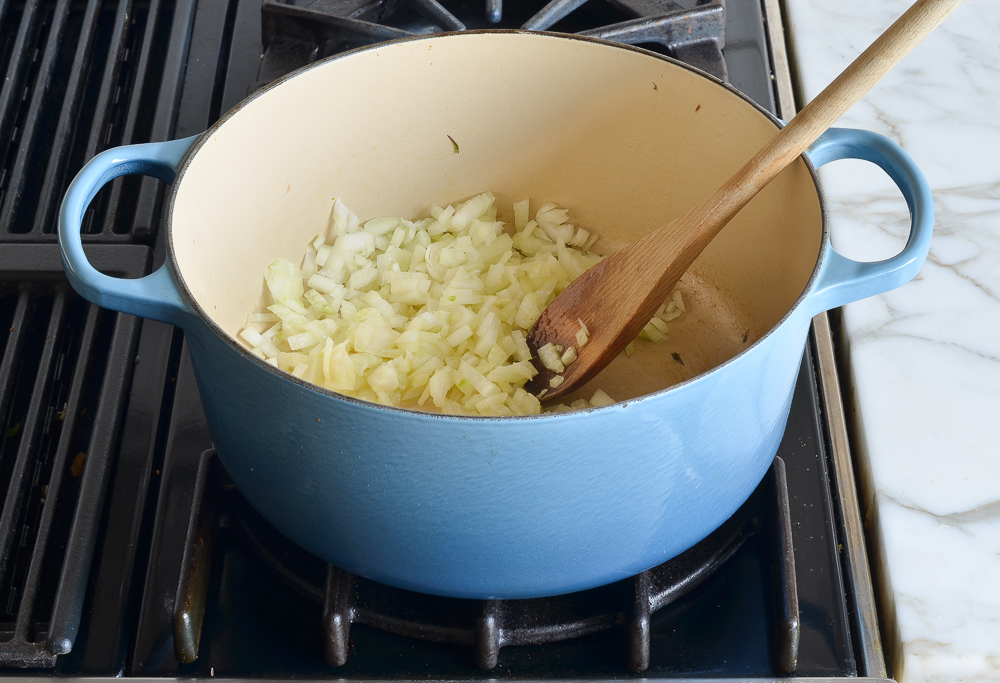
Cook, stirring frequently, until translucent, 2 to 3 minutes. Then, add the garlic and cook for 1 minute more. Do not brown.
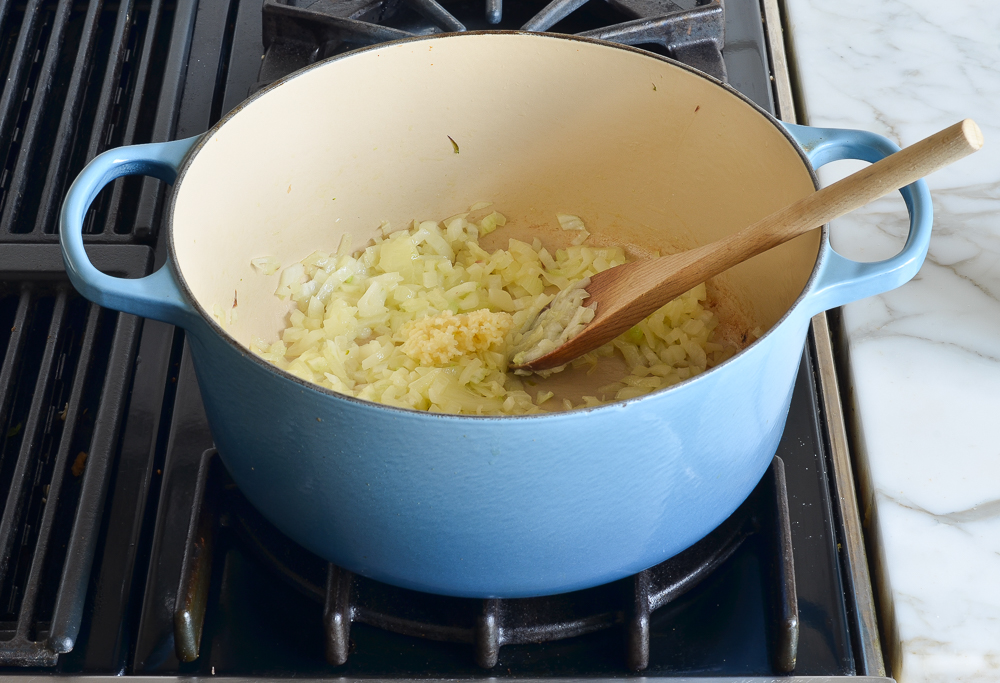
Add the Arborio rice to the onions and garlic.
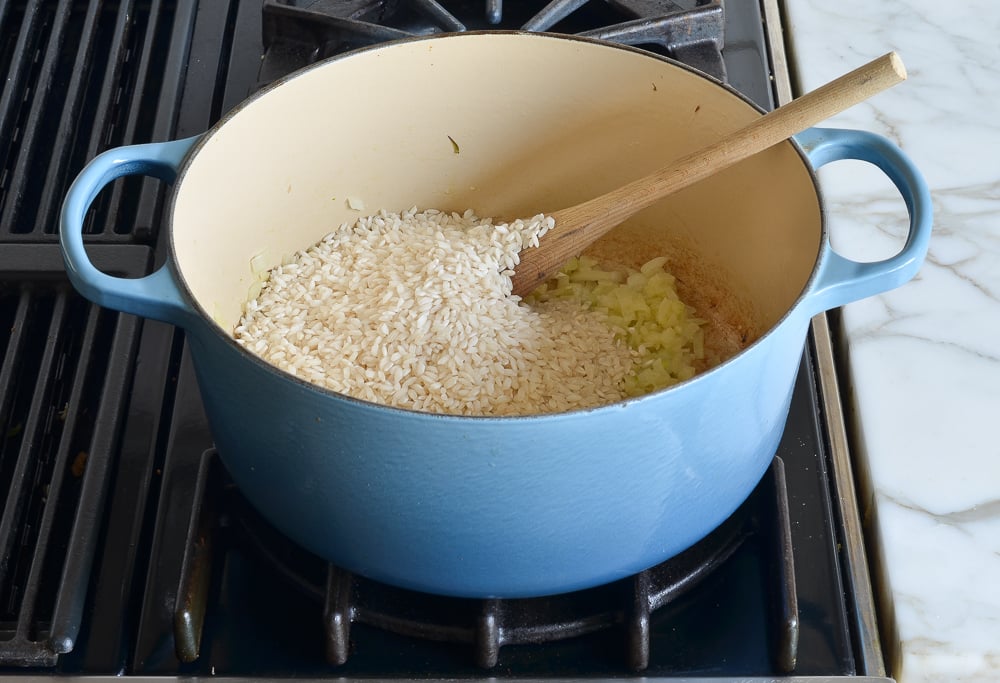
Cook, stirring constantly, until glossy and translucent around the edges, about 3 minutes. This step of toasting the rice in fat adds depth of flavor and also prevents the grains from becoming mushy during the cooking process.
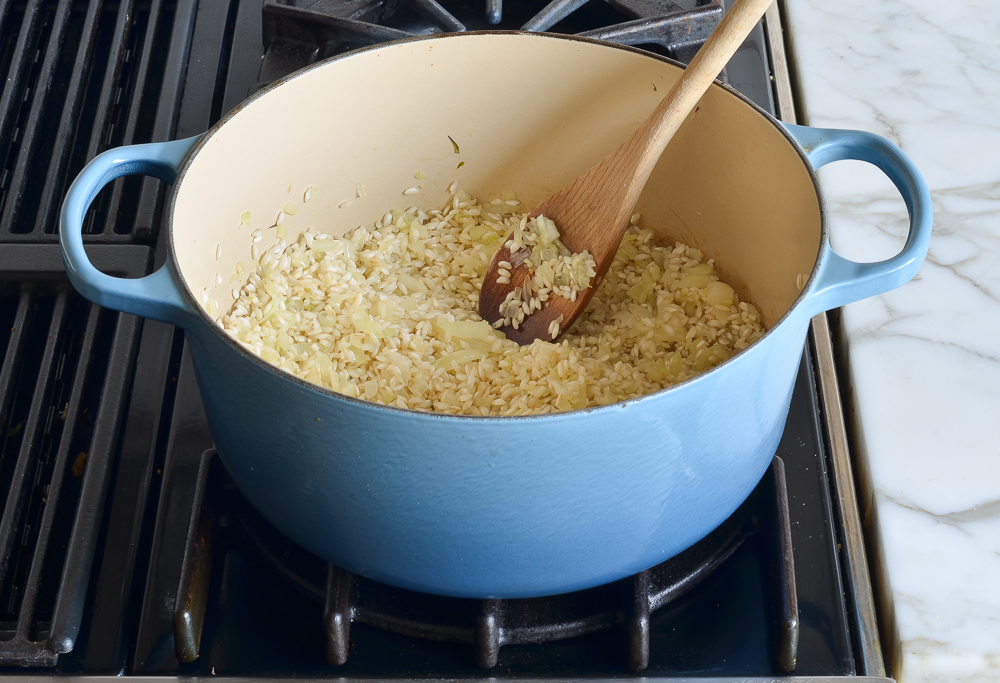
Add the wine and cook until completely absorbed, about 1 minute.
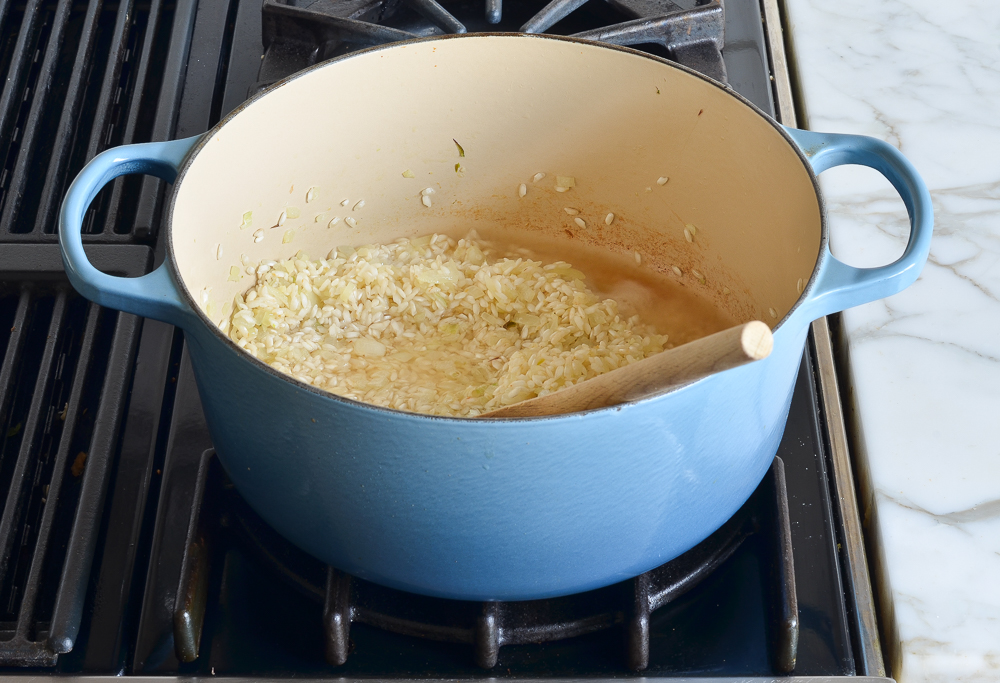
Ladle about 1 cup of the simmering broth into the rice.
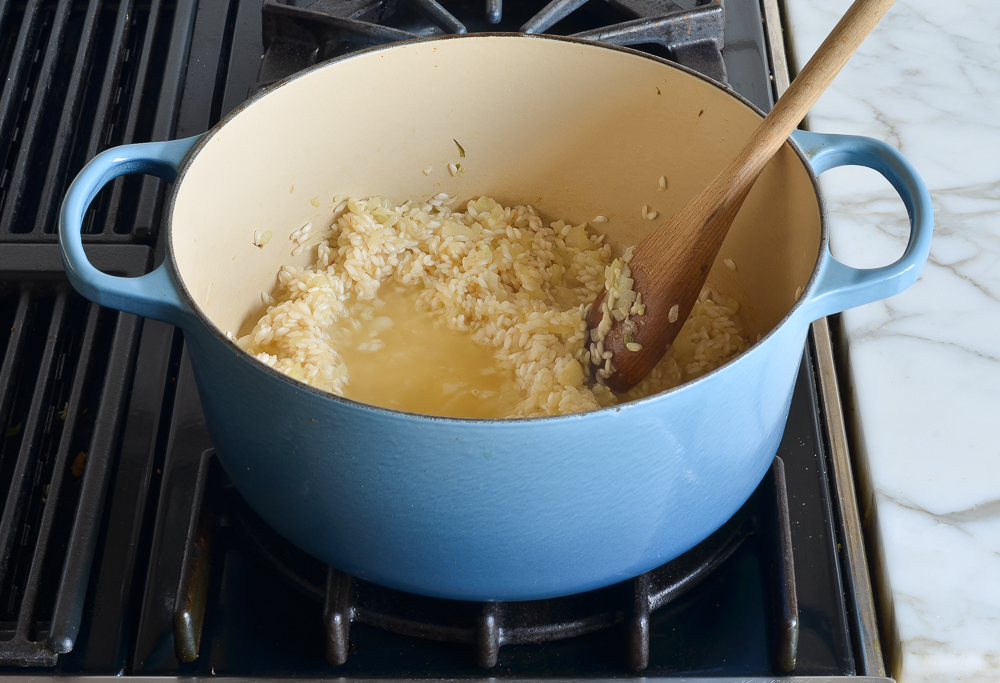
Cook, stirring occasionally, until absorbed. Continue adding the broth, 1 cup at a time and stirring until it is absorbed, until the rice is tender, about 25 minutes. You don’t need to stir constantly; just check on it every few minutes to stir and prevent sticking. You’ll know it’s done when the rice al dente — just cooked, still with a little bite to it.
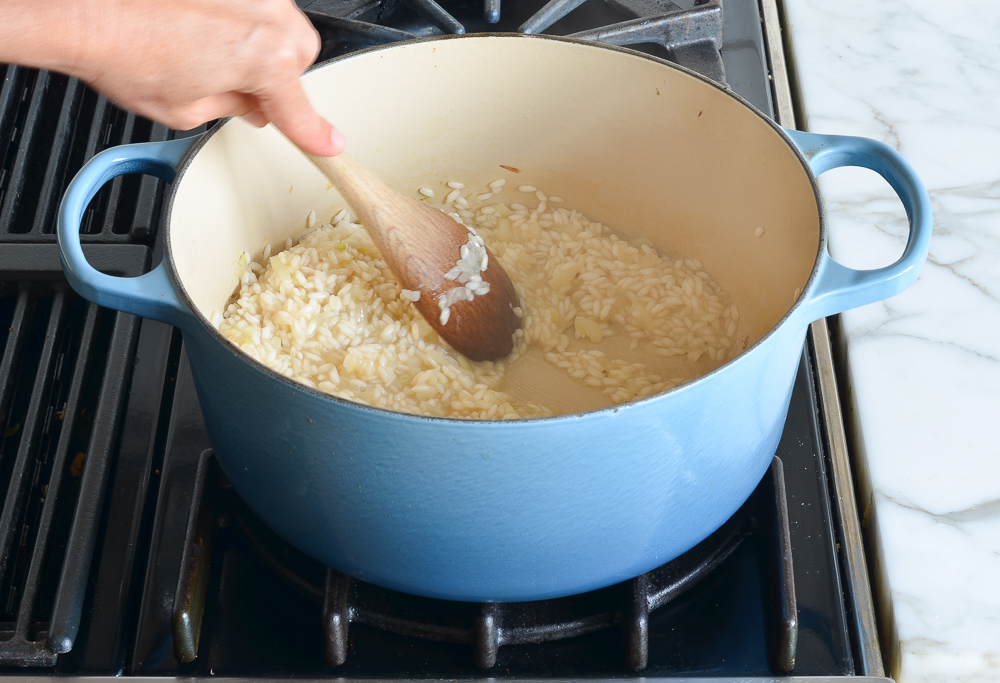 Add the reserved vegetables, Parmigiano-Reggiano, and remaining tablespoon of butter to the risotto.
Add the reserved vegetables, Parmigiano-Reggiano, and remaining tablespoon of butter to the risotto.
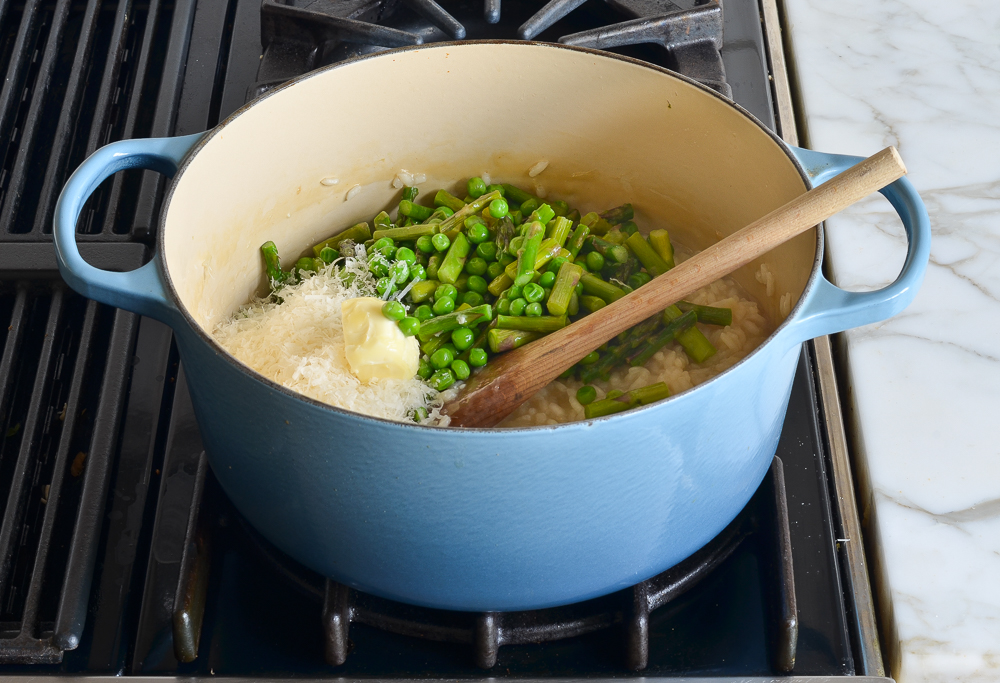
Stir, then taste and adjust seasoning with salt and pepper, if necessary. If the risotto is too thick, thin it with a bit of milk. Spoon into bowls and serve with more cheese.
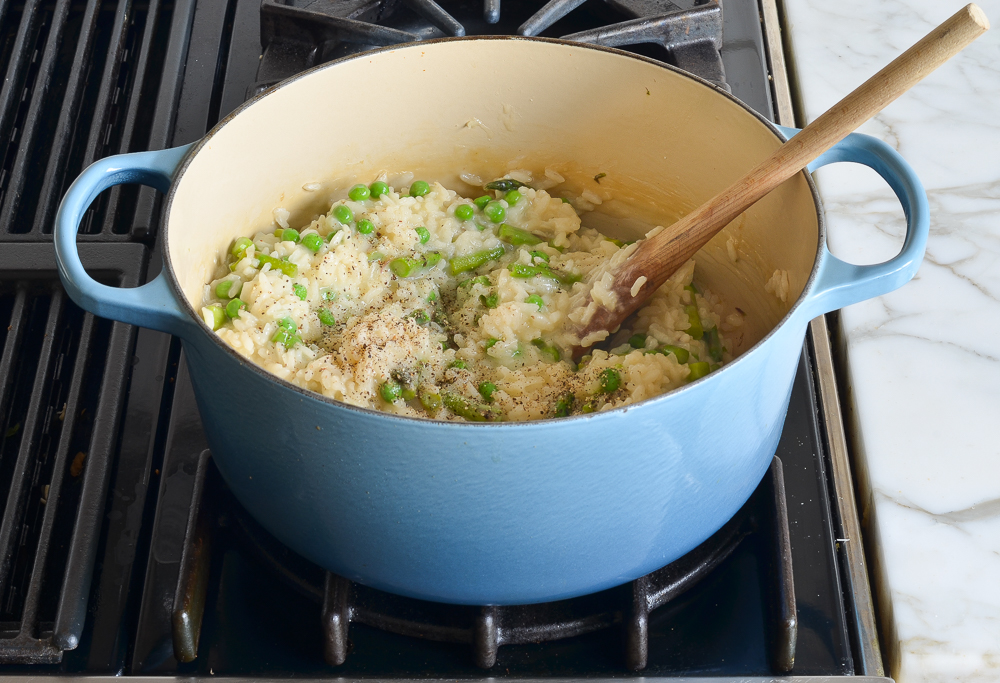
If you have leftover risotto, I highly recommend making risotto cakes. They are quite possibly even better than the actual risotto! You don’t need a recipe: simply mix the leftover cold risotto with a generous handful of shredded cheese. Use a cheese that melts well, such as fontina, Cheddar, Gruyère, or mozzarella. Scoop up about 1/3 cup of the risotto at a time and shape into patties about 3/4 inch thick and 3 inches wide. Coat the risotto cakes in panko, then fry in olive oil over medium heat until golden and crisp, about 3 minutes per side.
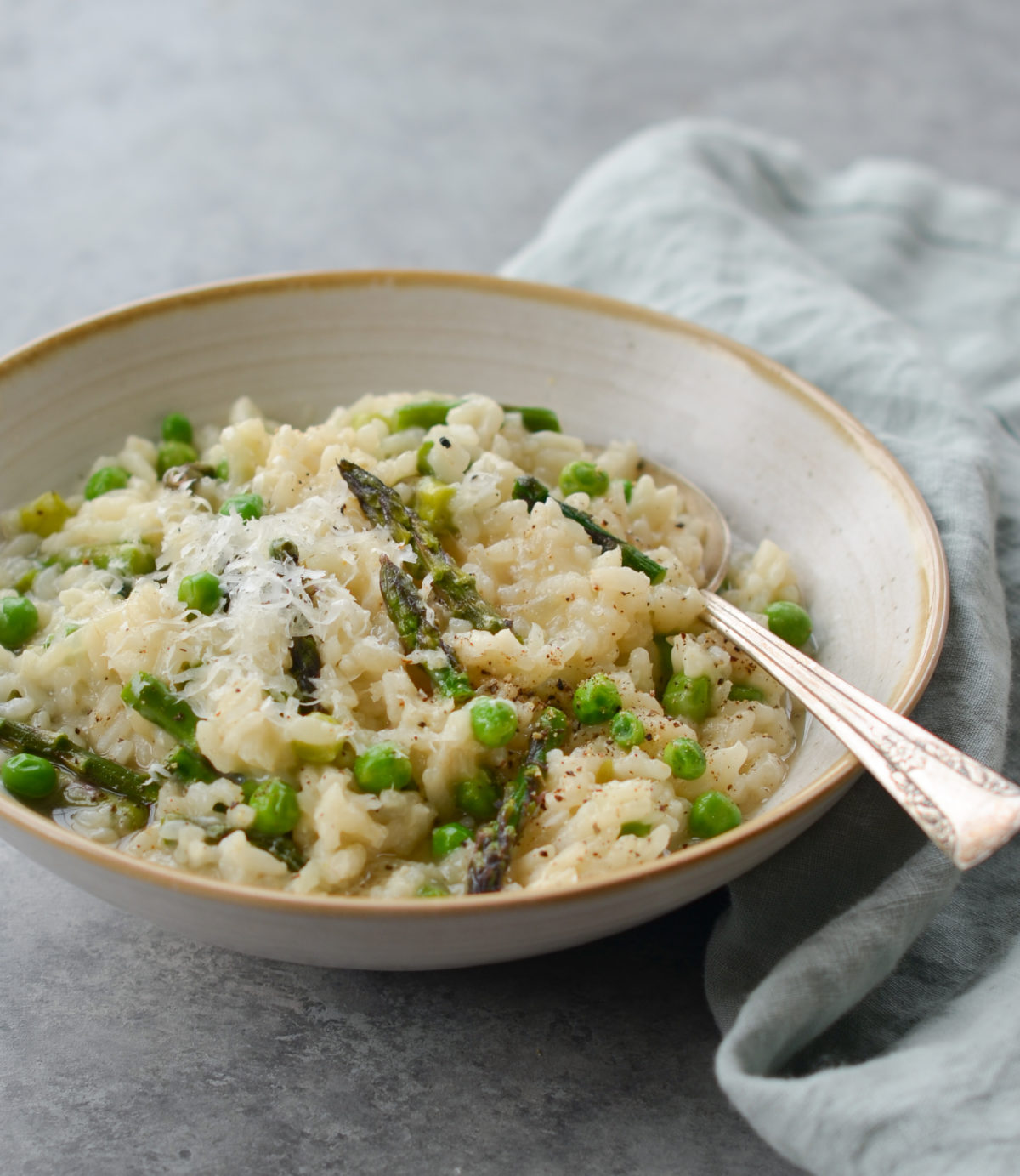
You may also like
- Pea Soup with Basil
- Orzo Risotto with Shrimp, Peas & Bacon
- Spinach Quiche
- Ratatouille
- Green Pea & Asparagus Soup with Feta, Mint & Pita Croutons
Spring Risotto with Asparagus & Peas
This creamy risotto with asparagus and peas makes a lovely starter, side dish, or vegetarian main course for spring.
Ingredients
- 6 cups low-sodium chicken broth
- 4 tablespoons unsalted butter, divided
- 1 bunch asparagus, preferably thin, trimmed and cut into 1-in pieces
- ¼ teaspoon salt
- Freshly ground black pepper
- 1 cup frozen peas
- 1 medium yellow onion, finely chopped
- 2 cloves garlic, minced
- 1½ cups Arborio rice
- ½ cup dry white wine
- ½ cup grated Parmigiano-Reggiano, plus more for serving
Instructions
- In a medium pot, bring the broth to a simmer.
- Meanwhile, in a large pot or Dutch oven, melt 1 tablespoon of the butter over medium-low heat. Add the asparagus, salt, and a few grinds of pepper. Cook, stirring frequently, until the asparagus is tender-crisp, 2 to 4 minutes, depending on the thickness of the asparagus. Add the peas and continue cooking until the peas are defrosted, about 1 minute. Transfer the vegetables to a plate and set aside.
- In the same pot over medium-low heat, melt 2 tablespoons of the butter. Add the onions and cook, stirring frequently, until translucent, 2 to 3 minutes. Add the garlic and cook for 1 minute more. Do not brown. Add the rice and cook, stirring constantly, until glossy and translucent around the edges, about 2 minutes. Add the wine and cook until completely absorbed, about 1 minute. Ladle about 1 cup of the simmering broth into the rice and cook, stirring occasionally, until absorbed. Continue adding the broth, 1 cup at a time and stirring frequently until it is absorbed, until the rice is al dente and creamy, about 25 minutes. (Be careful not to get distracted while the rice is cooking; while it doesn’t require a lot of skill, it does require you to keep a close eye on it to prevent sticking.)
- Stir in the reserved vegetables, Parmigiano-Reggiano, and remaining tablespoon of butter into the risotto. Taste and adjust seasoning with salt and pepper, if necessary. If the risotto is too thick, thin it with a bit of milk. Spoon the risotto into bowls and serve. Pass the Parmigiano-Reggiano at the table.
Nutrition Information
Powered by ![]()
- Per serving (8 servings)
- Calories: 277
- Fat: 9 g
- Saturated fat: 5 g
- Carbohydrates: 37 g
- Sugar: 2 g
- Fiber: 3 g
- Protein: 10 g
- Sodium: 245 mg
- Cholesterol: 20 mg
This website is written and produced for informational purposes only. I am not a certified nutritionist and the nutritional data on this site has not been evaluated or approved by a nutritionist or the Food and Drug Administration. Nutritional information is offered as a courtesy and should not be construed as a guarantee. The data is calculated through an online nutritional calculator, Edamam.com. Although I do my best to provide accurate nutritional information, these figures should be considered estimates only. Varying factors such as product types or brands purchased, natural fluctuations in fresh produce, and the way ingredients are processed change the effective nutritional information in any given recipe. Furthermore, different online calculators provide different results depending on their own nutrition fact sources and algorithms. To obtain the most accurate nutritional information in a given recipe, you should calculate the nutritional information with the actual ingredients used in your recipe, using your preferred nutrition calculator.

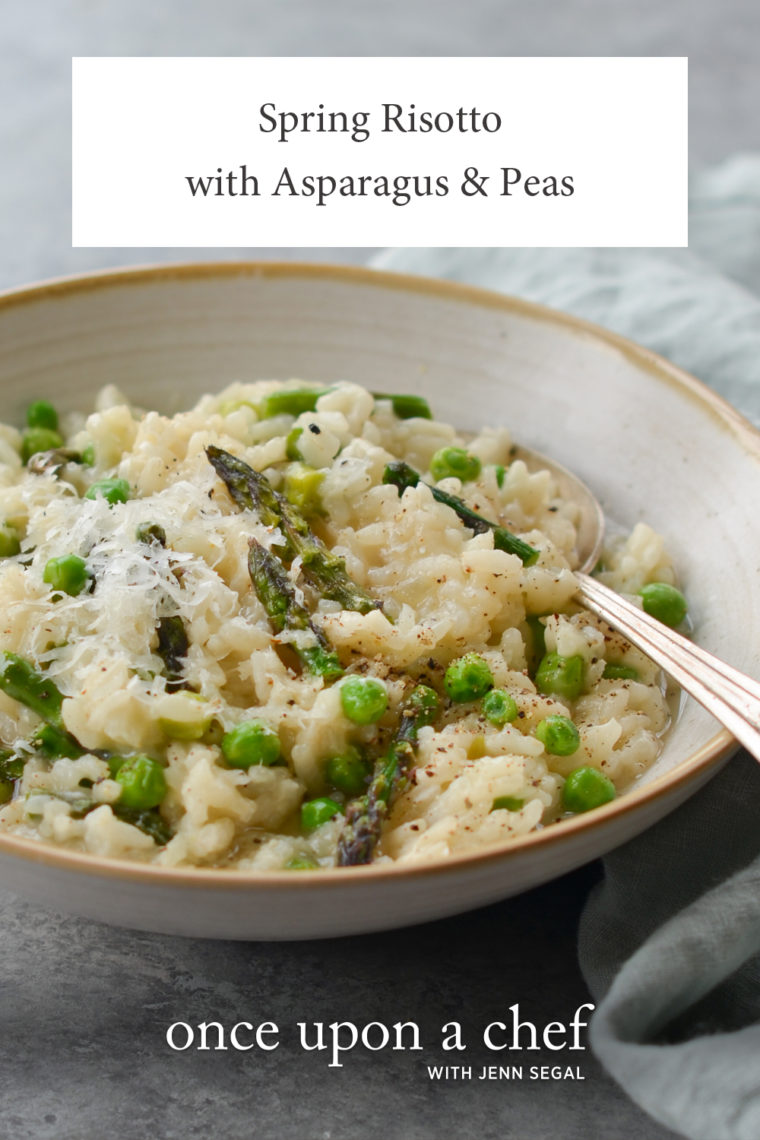
Amazing! What a great Lenten alternative! Cooked with a Franciscan Chardonnay. Love the veggies and turned out great. Thank you!
Easy and delicious!
I followed the recipe and it was perfect! I did add crumbled bacon and chives once plated. Thank you for another amazing recipe!
This looks wonderful. I’m hosting about 8 girlfriends next week and wanted to do a spring menu so am thinking:
-Spring Risotto with asparagus and peas
-Grilled Shrimp with tomato, garlic & herbs
-Roasted beet salad with goat cheese and walnuts
-Fresh Strawberry cake for dessert
– anything you’d change??
I think I can have most of it made ahead of time so just do risotto and quick grill of shrimp before dinner.
Thanks Jen!
Allison, I think it sounds like a nicely paired, well-rounded meal. Hope everyone enjoys!
I wish I was there. It sounds delicious. 😉
This was delicious! I subbed sautéed broccoli and carrots and served this with chicken Piccata and roasted asparagus.
Excellent excellent excellent. My 83 year old mother still regularly delivers me her homemade chicken broth which clearly has a higher fat content (evident when cold); because I used that broth for this recipe, I used less butter than the recipe called for, but the flavor and consistency was spot on otherwise. Thank you for another great recipe.
I made this last night and it’s excellent. I’ve never made or eaten risotto before and was surprised by how easily it cooked up and how delicious it is. As it cooked up my wife called in and I suggested we might be doing take out because dinner wasn’t looking good. Ha! We were both surprised by it’s deliciousness! We’re making the risotto cakes with the leftovers tonight.
My go to! I have made this many times and always amp up veggies but either way, it is delicious!
I made this tonight and, wow, it was absolutely delicious. I really don’t know what I’d do without your recipes. They are all an excellent culinary adventure. Thank you.
💗
Hi Jenn! Love your recipes and wanting to make this one soon. How long does white wine (and wine in general) last once opened? I always buy the little bottles of wine to cook with since we don’t drink alcohol, but I’m always unsure if it is bad by the time I go to use the rest of it…I do refrigerate once opened.
Hi Lauren, So glad you like the recipes! If you look online, you’ll see that many sources say that open wine will last for 2 to 5 days in the fridge (here’s one), but I keep a bottle of wine open in my fridge for up to about 2 weeks and have never had a problem. Hope that helps and that you enjoy the risotto when you make it!